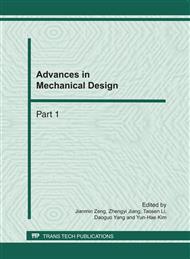p.1457
p.1465
p.1472
p.1477
p.1482
p.1487
p.1492
p.1496
p.1501
Analysis of Thermal Resistence for High-Power Light-Emitting Diodes
Abstract:
This paper measures the LED thermal resistance characteristic by thermal transient tester (T3Ster) obtained the cumulative structure functions curve and differential structure functions curve. The actual K factor and optical power are obtained by testingⅠ. The thermal resistance characteristic of each layer for LED structure are analyzed by testingⅡ in different cases. The experimental results show that the bonding method and the heat sink size have tremendous influence on the LED thermal resistance’s reduce, and the contact thermal resistance takes up a great proportion in LED total thermal resistance. The contact thermal resistance may reduce by pressure on interface and by a change of the attach material and the roughness of interface.
Info:
Periodical:
Pages:
1482-1486
Citation:
Online since:
February 2011
Authors:
Price:
Сopyright:
© 2011 Trans Tech Publications Ltd. All Rights Reserved
Share:
Citation:


